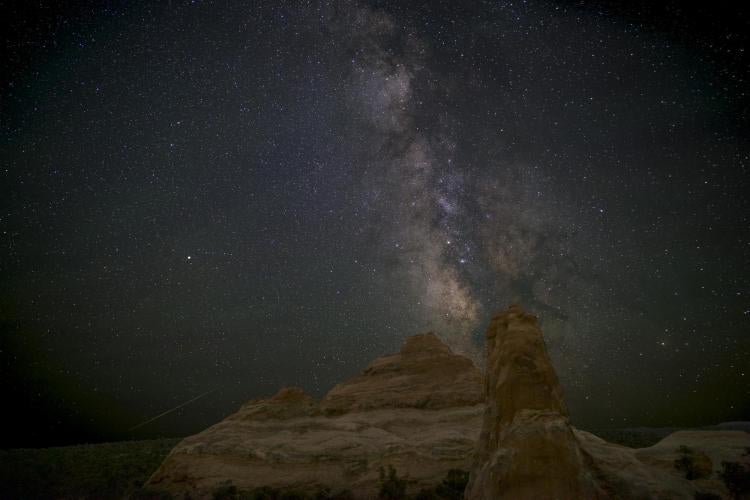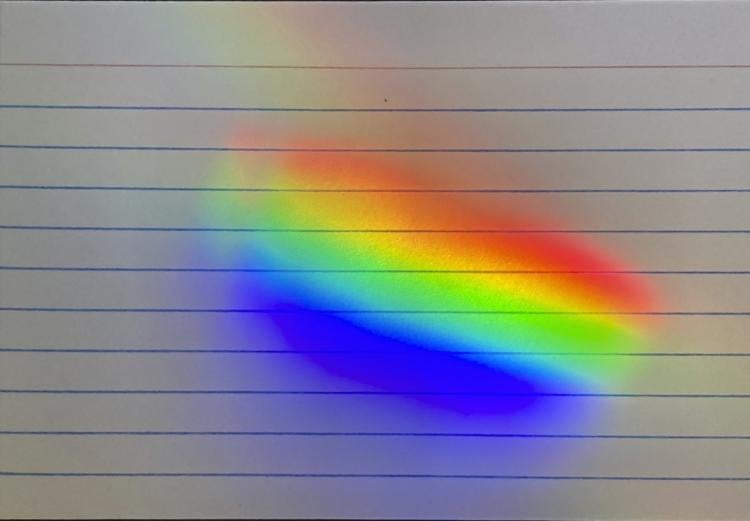Celestial phenomena: STEVE, Belt of Venus, Earth's shadow and the Milky Way
Approximately 90% of Americans have never seen the Milky Way, and a recent study of light pollution in the world reports that 80% of Americans cannot see stars in the night sky near their homes due to light pollution
With dry air and clear skies, people in the west have much greater opportunity to enjoy the light shows at dawn and dusk and celestial phenomena. Following are comments and details, each starting with a question about mechanisms.
What is the newest celestial phenomenon? STEVE is an acronym for Strong Thermal Emission Velocity Enhancement, and the first photos of it appeared in 2015. The first paper describing it appeared in 2018, and it presented STEVE as a discovery of citizen science, not by astronomers or physicists. Citizens saw it first, and photographed it, and then collaborated with academics and NASA to spur professional studies of it.
The Milky Way appears to be a diaphanous band, glowing softly in the sky."
STEVE appears as a purple or mauve streak in the sky, up to thousands of kilometers (km) long, flowing from east to west. Its color is likely to be emissions produced by ions (charged atmospheric particles) moving 6 to 7 km per second, 300 to 400 km above the ground. NASA scientists suspect that the ions are very hot, about 6,000 degrees Celsius (C), despite the fact that the temperature at that elevation is less than -100 C. Sometimes the mauve streak is accompanied by bright green slashes that suggest a picket fence drifting quickly to the east. The pickets seem to be moving slower, and may be associated with turbulence spun off by the supersonic ions. These new lights in the sky are so strange that many questions wait to be answered.

At the top of the page: The earth's shadow (blue) and the Belt of Venus (pink) seen at dusk from Fantasy Canyon, Utah. Above: The Milky Way as seen in August; the galactic center is just above and to the left of the spire. Photos by Jeff Mitton.
Why are sunsets and sunrises red and orange and yellow? Although we think of the atmosphere as extending miles above the earth, views from space reveal that it is a thin veneer wrapping the earth. Consequently, when the sun is rising or setting, the rays that reach us pass through 40 times more atmosphere than at noon. The white light from the sun is composed of a spectrum of wavelengths, or colors, and longer wavelengths, including red and orange and yellow, pass through air more efficiently than short wavelengths, including violet, indigo, blue and green. Alpenglow, the soft cherry red on snowy peaks just before dawn, is another phenomenon of filtering of wavelengths. Before the sun rises, the long wavelengths are reflected from ice crystals, water droplets and particulates in the atmosphere to give snowy peaks their eerie glow.

Sunlight passed through a prism is refracted, arranging the visible light spectrum by wavelength, from short to long: violet, indigo, blue, green, yellow, orange and red. Photo by Jeff Mitton.
What causes the pink and deep blue on the horizon opposite the sun before sunrise or after sunset? Just before the sun rises in the east, a blue line is apparent in the atmosphere just above the western horizon, and above the blue line is a broader pink band. The blue line is earth's shadow. The pink is called the belt of Venus and also antitwilight. As with alpenglow, predominantly red light is scattered by particulates, forming a pink glow.
What is the largest object that we can see? In my opinion, our galaxy, the Milky Way, wins hands down. It is comprised of at least one hundred billion stars, but possibly four times that many. Our galaxy appears as a thin disk when viewed from our vantage but from another angle it is a circle with arms radiating from its center, forming an elegant spiral. The spiral galaxy is 100,000 light years in diameter--that is, it would take 100,000 years for a flash of light from one side to reach the other side. So, when we look toward the galactic center, that light was created 25,000 years ago.
Our solar system is on one of the arms, approximately equidistant between the galactic center and edge. The Milky Way appears to be a diaphanous band, glowing softly in the sky. Depending on the time of year, it may be a band that stretches from the northeastern to the southwestern horizon, or an arc from the southeast to the southwest. When viewed from high elevation on a dry, cloudless night, one can see subtle blues and reds. The galaxy appears brightest when we look toward its center, but its luminance is blocked by immense clouds of interstellar dust and gas, forming elaborate patterns of light and darkness. The galactic center is obscured by dark clouds, but its center is noted in the photograph's legend.
Approximately 90% of Americans have never seen the Milky Way, and a recent study of light pollution in the world reports that 80% of Americans cannot see stars in the night sky near their homes due to light pollution. The night sky phenomena discussed here are becoming less and less accessible. Fortunately, 27 National Parks have been declared dark sky refuges, including Great Sand Dunes, Dinosaur, Arches, Hovenweep, Natural Bridges, Capitol Reef, Canyolands and Arches National Parks.

